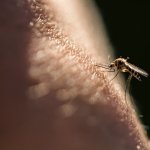As temperatures in Southern California continue to rise, West Nile virus cases are expected to increase. Here’s what to know:

What is the West Nile Virus?
The “West Nile Virus” was first identified in the sub-region of Uganda called The West Nile.
The virus runs during mosquito season, which takes place from summer through fall. It is present within all states of the continental U.S.
The virus survives within several types of birds and is transmitted when a mosquito feeds off of an infected bird. The disease can infect humans, horses, and birds.
It is the most common vector-borne virus in California with more than 7,000 human cases and over 300 deaths in California since 2003.
While serious illness is possible, only one in 150 infected people develop a serious or fatal illness, according to the Center for Disease Control and Prevention.
How does the virus spread?
The virus spreads through an infected mosquito bite.
Mosquitos tend to thrive in warmer weather making the diseases that they carry more active and transmissible.
What are the symptoms?
Most people who have the virus do not have any symptoms. Around eight in 10 people do not face any sort of symptoms while they have the virus, according to the CDC.
Those who face minor illness from the virus should expect to feel symptoms such as:
- fever
- headache
- body aches
- joint pains
- vomiting
- diarrhea
- rash
Those who do face severe illness from the virus should expect to feel symptoms such as:
- high fever
- headache
- neck stiffness
- stupor
- disorientation
- coma
- tremors
- muscle weakness
- vision loss
- paralysis
How can you prevent getting the West Nile Virus?
The best way to protect yourselves from the virus is by using insect repellent and to wear long sleeve shorts and pants to decrease the possibility of a mosquito bite.

